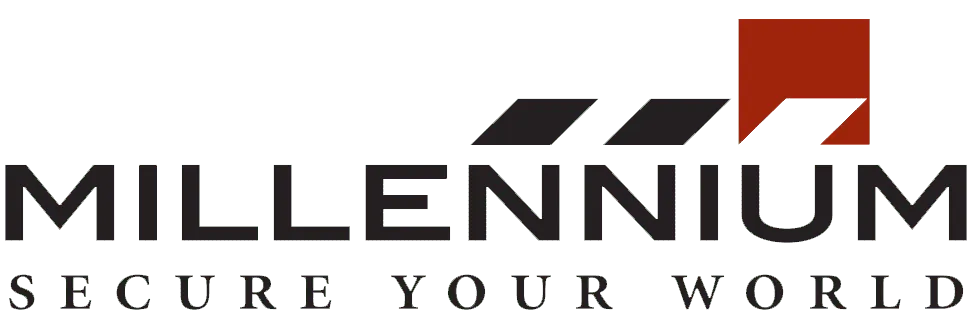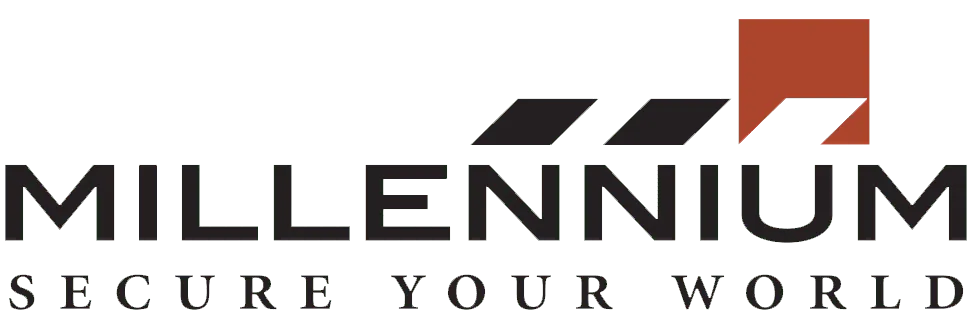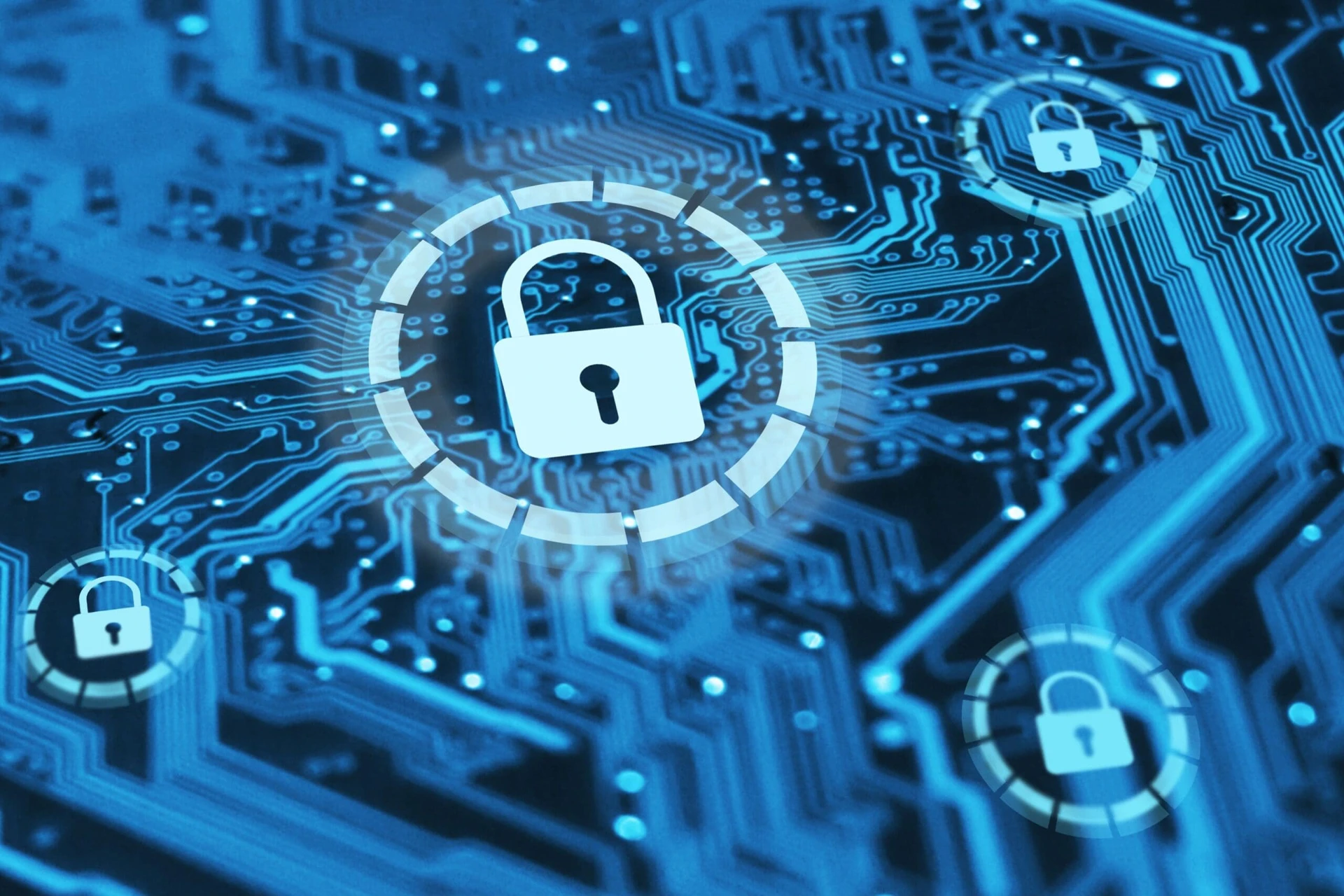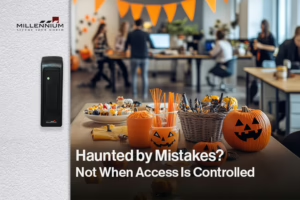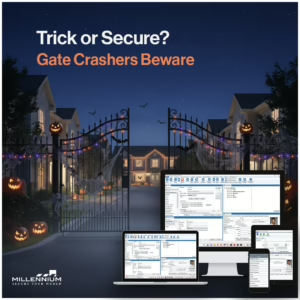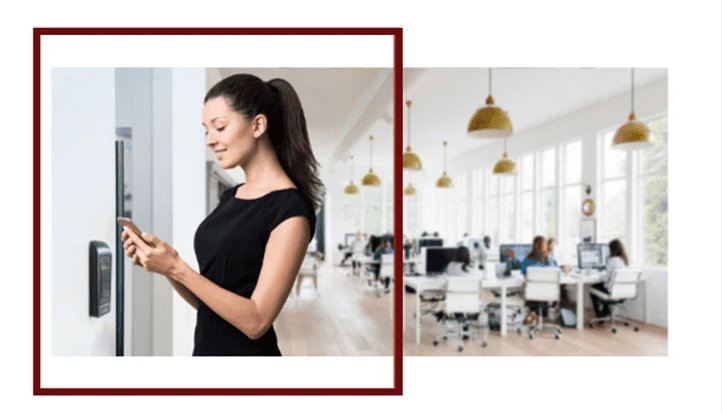Access control systems are essential in today’s security landscape, providing a reliable way to protect physical spaces and sensitive data. Whether you’re managing a corporate office, a multifamily residential complex, or a healthcare facility, access control solutions offer a streamlined method for securing your premises, ensuring that only authorized individuals are granted access. This guide will explore everything you need to know about access control systems, their features, benefits, and how they can enhance security across various industries.
What Are Access Control Systems?
An access control system is a security solution used to regulate who can enter specific areas within a building, facility, or restricted zone. These systems ensure that only authorized personnel can enter certain locations, whether it’s an office, server room, or even a secure parking lot. By using authentication methods like keycards, biometrics, PIN codes, or mobile devices, access control solutions provide both physical and digital security.
At its core, an access control system helps manage and monitor entry points, offering a high level of security while ensuring that access is granted only to those who have the proper credentials.
Why Access Control Systems Matter
1. Reducing Security Risks
As security threats continue to evolve, having a robust access control system is more important than ever. In today’s digital and physical world, traditional lock-and-key methods are no longer enough. Modern access control systems use multiple layers of authentication, such as biometric verification and smartcards, to protect against unauthorized entry.
For instance, biometric methods like fingerprint or facial recognition are nearly impossible to bypass, offering a higher level of security than conventional PIN codes or keycards. This heightened security significantly reduces the risk of unauthorized access and strengthens overall safety.
2. Streamlining Entry and Exit
In fast-paced environments, efficiency matters. Traditional methods of managing access—like physical keys—are slow and prone to human error. With access control solutions, the entry and exit process is fast, automated, and secure. Employees or visitors can access buildings or restricted areas within seconds using smartcards, biometric scans, or mobile devices.
Additionally, many cloud-based access control systems integrate with time and attendance systems, allowing businesses to monitor employee hours and enhance operational efficiency.
3. Real-Time Access Monitoring
One of the most significant advantages of modern access control systems is the ability to monitor access in real-time. Traditional locks don’t provide visibility into who is entering or leaving a space. However, with access control solutions, every entry and exit is tracked, complete with timestamps, locations, and user credentials.
This real-time data allows administrators to quickly detect and respond to security incidents, such as unauthorized access or breached entry points. If a credential is lost or stolen, access can be revoked remotely and instantly, ensuring that your premises remain secure.
4. Flexible and Scalable Security
Whether you’re managing a small office or overseeing a large multifamily property, access control systems offer scalability and flexibility. These systems can be easily customized to suit the security needs of any organization. For example, access permissions can be tailored for different users, specifying which areas they can enter and when.
This flexibility is especially beneficial for industries that require strict access control, such as healthcare, education, and finance, where sensitive areas must be protected.
Key Features of Access Control Systems
1. Authentication Methods
The heart of any access control system is its authentication method, which verifies the identity of individuals attempting to enter a secure area. Several authentication methods exist, including:
- Keycards: Swiping or tapping a keycard at a designated reader grants access to authorized individuals.
- Biometric Scanning: Fingerprints, facial recognition, and retina scans provide highly secure, unique identifiers for everyone.
- PIN Codes: Personal identification numbers (PINs) offer a simple, secure method of authentication.
- Mobile Access: Users can gain access by using their smartphones, leveraging Bluetooth, NFC, or QR code technology.
Each method has its benefits, allowing businesses to choose the most suitable solution for their security needs.
2. Control Panels
The control panel is the nerve center of an access control system. It processes data from authentication devices (like keycard readers or biometric scanners), stores access credentials, and communicates with locking mechanisms to grant or deny entry. Many modern systems use cloud-based control panels, offering remote management capabilities.
3. Door Hardware
The locking mechanism is a crucial component of any access control system. This can range from traditional mechanical locks to advanced electronic locks that can be integrated into the system for greater flexibility. Electronic locks are easier to control, can be remotely locked or unlocked, and are often more secure than traditional locks.
4. Software for Access Management
The software component of an access control system allows administrators to manage user credentials, configure access settings, and generate detailed access logs. Many systems now offer cloud-based software that allows businesses to manage their access control remotely, from any location, at any time.
5. Integration with Other Security Systems
Integrating cloud-based access control solutions with other security technologies, such as CCTV cameras, alarm systems, and fire detection systems, enhances the overall security infrastructure. For example, integrating access control with surveillance cameras allows businesses to monitor who enters and exits specific areas and verify their identity in real-time.
Cloud-Based Access Control Solutions
1. Remote Access and Management
Cloud-based access control systems are revolutionizing the way businesses manage security. These systems allow administrators to remotely monitor and manage access from anywhere in the world. This means you can view real-time activity, grant or revoke access, and adjust settings—all from your phone or computer.
Cloud solutions also offer greater flexibility, as they don’t require on-site hardware, reducing maintenance costs and providing easier scalability.
2. Cost-Effectiveness and Scalability
Cloud-based access control systems are often more cost-effective than traditional, on-premise systems. They eliminate the need for expensive servers and onsite infrastructure, and their scalability allows you to easily add new doors, users, or locations as your business grows.
3. Automatic Updates and Maintenance
With cloud-based solutions, updates and maintenance are handled automatically, ensuring that your system always runs the latest software version with the latest security features. This minimizes downtime and the need for on-site technicians, making it an ideal solution for businesses looking to streamline their security management.
4. Enhanced Data Security
Cloud-based access control systems offer enhanced data security, as they utilize encryption to protect sensitive access data. By storing data off-site in secure, redundant data centers, these systems offer a level of protection that traditional, on-premise solutions can’t match.
Mobile Access Control: A New Era of Convenience
Mobile access control is a game-changer for businesses and organizations looking to enhance both security and convenience. By using smartphones as access credentials, businesses can eliminate the need for physical keycards or PIN codes. Instead, users can gain access through Bluetooth, NFC, or QR codes.
This technology not only improves security but also offers a more convenient and user-friendly experience for employees and visitors. Mobile access control can also be integrated with other smart technologies, such as geolocation and facial recognition, for even greater security.
Access Control Systems in Different Industries

1. Healthcare
Access control systems for hospitals are vital for protecting sensitive patient data, pharmaceuticals, and medical equipment. Whether it’s safeguarding a pharmacy, a patient records room, or a high-security lab, access control ensures that only authorized personnel can enter restricted areas. These systems also help healthcare organizations comply with regulations like HIPAA (Health Insurance Portability and Accountability Act), which mandates the protection of patient information.
2. Education
Schools and universities require robust security to protect students and staff. Access control solutions for schools can restrict access to sensitive areas like classrooms, labs, and dormitories. These systems can also be customized to allow access during specific hours, helping to maintain security even in large, complex campus environments.
3. Corporate Offices
Access control systems for enterprise & businesses are essential for safeguarding valuable intellectual property, data, and employees. By controlling access to restricted areas like server rooms and executive offices, businesses can prevent unauthorized access and protect confidential information.

4. Government and Military Facilities
Government and military facilities often deal with high-level security threats. These areas require the most advanced access control solutions to ensure that only authorized personnel can enter critical areas. Biometric authentication, multi-factor authentication, and integration with surveillance systems are common in these environments.
5. Multifamily Residential Complexes
For property managers, multifamily apartment and residential security systems offer a way to ensure the safety of residents by controlling access to building entrances, parking lots, and common areas. These systems can be configured to provide temporary access for visitors or contractors, and remote access management allows for easy monitoring of who enters and exits the building.
The Future of Access Control Systems
As technology continues to evolve, so do access control systems. The future of access control lies in increased integration with smart technologies, such as IoT devices, AI, and mobile solutions. These innovations will make systems smarter, faster, and more intuitive.
Expect to see even more advanced biometric options, such as voice recognition and enhanced facial recognition, along with deeper integration with smart building technologies. With these advancements, access control solutions will continue to enhance security and convenience for businesses across industries.
Ready to Secure Your Space? Contact Us Today!
At Millennium, we understand the importance of reliable and scalable access control systems in safeguarding your property, data, and people. Whether you’re looking to enhance security at a multifamily building, a corporate office, or a healthcare facility, our expert team can help you find the perfect solution for your needs.
Contact us today to learn more about how our access control systems can help improve your security system. Let us guide you through selecting the right solution and customizing it to meet your specific requirements. Together, we can enhance your security, streamline access management, and give you peace of mind.
Millennium is a scalable, hosted, access control platform that services any type of real estate. Our cloud-based solution allows managers and tenants to efficiently manage their physical security from anywhere while enhancing experience and driving profitability.
